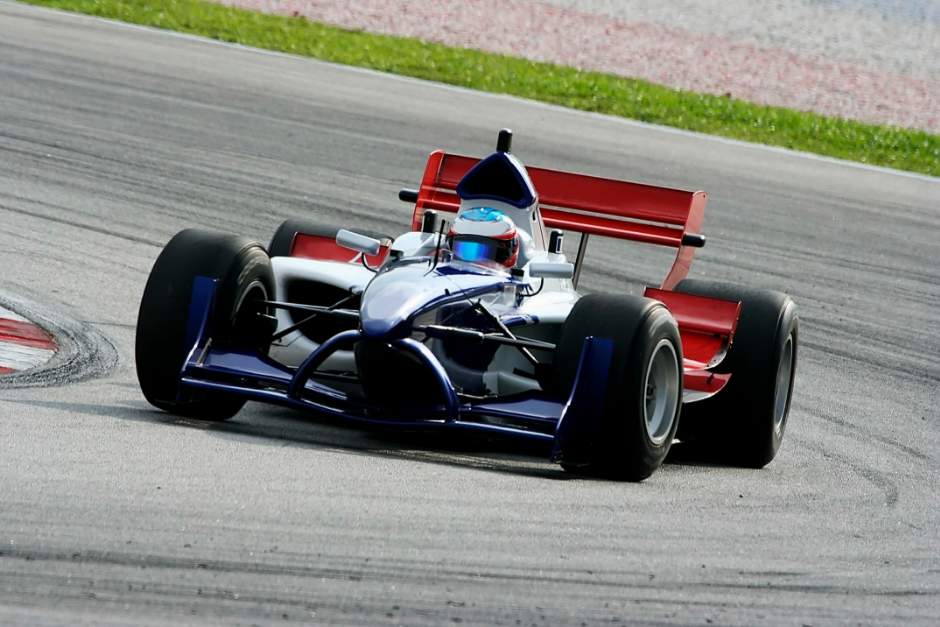Inside the Fuel Bladders That Power High-Performance Race Cars

Auto Racing Fuel Bladder Table of Contents
- Introduction
- Materials and Technology
- Safety Innovations in Racing
- Customization for Racing Leagues
- Vinyl Technology Can Do All This and More
In the adrenaline-fueled world of high-performance race cars, every component plays a critical role. Among these, auto racing fuel bladders stand out, quietly powering the machines that thrill audiences worldwide. These flexible, collapsible containers, specifically designed to store and transport fuel, have become integral to modern racing.
But what makes fuel bladders so essential in race cars? It’s not just about holding fuel; it’s about doing so with efficiency, safety, and adaptability. Over the years, fuel bladders have evolved, embracing new materials and technologies to meet the demanding needs of the racing industry.
In this post, we’ll take you on a journey inside the fuel bladders that power high-performance race cars. From the unique materials that make them up to the innovations that have shaped their safety features, we’ll explore how fuel bladders have become a symbol of technological excellence in racing.
Materials and Technology
Fuel bladders in race cars are not mere containers; they are marvels of engineering, crafted with precision and innovation. Let’s explore the unique materials and technology that make them stand out:
Cutting-Edge Materials
Fuel bladders are typically constructed from elastomer-coated fabrics, a choice that ensures both flexibility and durability. The use of advanced materials like Kevlar for reinforcement adds an extra layer of toughness, making them resistant to potential damage during high-speed races.
Homogeneous Vulcanization
This manufacturing process involves the simultaneous vulcanization of the entire structure, creating a seamless and robust fuel bladder. It’s a technique that ensures compatibility with the intended fuel contents and provides the mechanical strength needed for shipment and storage.
Design Engineering
The design of fuel bladders goes beyond mere shape and size. Engineers consider factors such as fuel type, temperature resistance, and specific racing requirements. This meticulous design process results in fuel bladders that are tailored to the unique demands of different racing series.
Compatibility with Various Fuels
Fuel bladders are not one-size-fits-all. They must be compatible with various types of fuels used in racing. Special coatings and interior barrier films are often added to prevent contamination and ensure that the fuel’s integrity is maintained.
Safety Innovations in Racing
In the high-stakes world of racing, safety is paramount, and innovations in fuel bladder technology have played a pivotal role in enhancing driver protection. The racing industry has witnessed a transformation in safety standards, thanks in part to the development of specialized fuel bladders that cater to the unique demands of high-speed competition.
One of the most significant advancements has been the ability to tailor fuel bladders to the specific needs of different racing series. By customizing the design to the unique requirements of each race car and track, engineers have been able to ensure optimal functionality under various racing conditions. This customization goes beyond mere shape and size; it encompasses factors such as fuel type compatibility, temperature resistance, and alignment with environmental regulations.
Furthermore, the industry’s commitment to responsible engineering has led to a proactive approach to safety. This includes not only compliance with regulatory guidelines but also the implementation of best practices to minimize risks. From containment measures to prevent leakage to the use of neutral barrier films to avoid contamination, every aspect of fuel bladder design is meticulously considered.
These safety innovations reflect a broader trend in the racing industry towards increased safety measures and responsible engineering. It’s a complex and vital aspect of racing that goes beyond mere compliance with regulations, embodying a commitment to protecting both drivers and spectators, without compromising performance.
Fuel Bladder Customization for Auto Racing Leagues
In the dynamic world of motorsports, no two races are the same, and neither are the cars that compete in them. This diversity extends to auto racing fuel bladders, where customization has become a defining feature. The ability to tailor fuel bladders to the specific needs of different racing series has opened new horizons in performance and efficiency.
For instance, the demands of a Formula 1 race differ vastly from those of a NASCAR event. The tracks, the cars, the speeds, and even the fuels used can vary widely. This requires fuel bladders that are not just robust and safe but also precisely engineered to fit the unique requirements of each race.
The customization process begins with a thorough understanding of the racing conditions. Engineers analyze factors such as the type of fuel used, the expected temperatures, the nature of the track, and the specific design of the race car. This analysis informs the design process, allowing for the creation of fuel bladders that are perfectly aligned with the needs of the race.
But customization is not just about performance; it’s also about sustainability. By designing fuel bladders that are precisely matched to the requirements of the race, wastage is minimized, and efficiency is maximized. This not only enhances the competitiveness of the race car but also contributes to a more sustainable approach to racing.
The ability to customize fuel bladders represents a fusion of art and science, where creativity meets engineering precision. It’s a process that underscores the complexity and sophistication of modern racing and highlights the relentless pursuit of excellence that defines the sport.
The world of high-performance race cars is a symphony of engineering, innovation, and relentless pursuit of excellence. Fuel bladders, though often overlooked, play a vital role in this intricate orchestra. From the cutting-edge materials that give them strength to the safety innovations that protect drivers, from the customization that enhances performance to the responsible practices that align with environmental stewardship, fuel bladders are a microcosm of the technological brilliance that defines modern racing.
Vinyl Technology Can Do All This and More
At Vinyl Technology, we understand the complexity and demands required of auto racing fuel bladders. Our expertise in RF welding, custom industrial sewing, and manufacturing allows us to create products like fuel bladders that meet the rigorous standards of businesses and organizations in the racing industry. We are committed to delivering safe, reliable, and cost-effective solutions that align with the unique needs of our clients.
If your company is seeking custom RF welding, RF Sealing services, PVC sealing, or custom industrial sewing, we invite you to contact us today. Together, we can contribute to the future of racing, driving innovation, safety, and performance to new heights.

